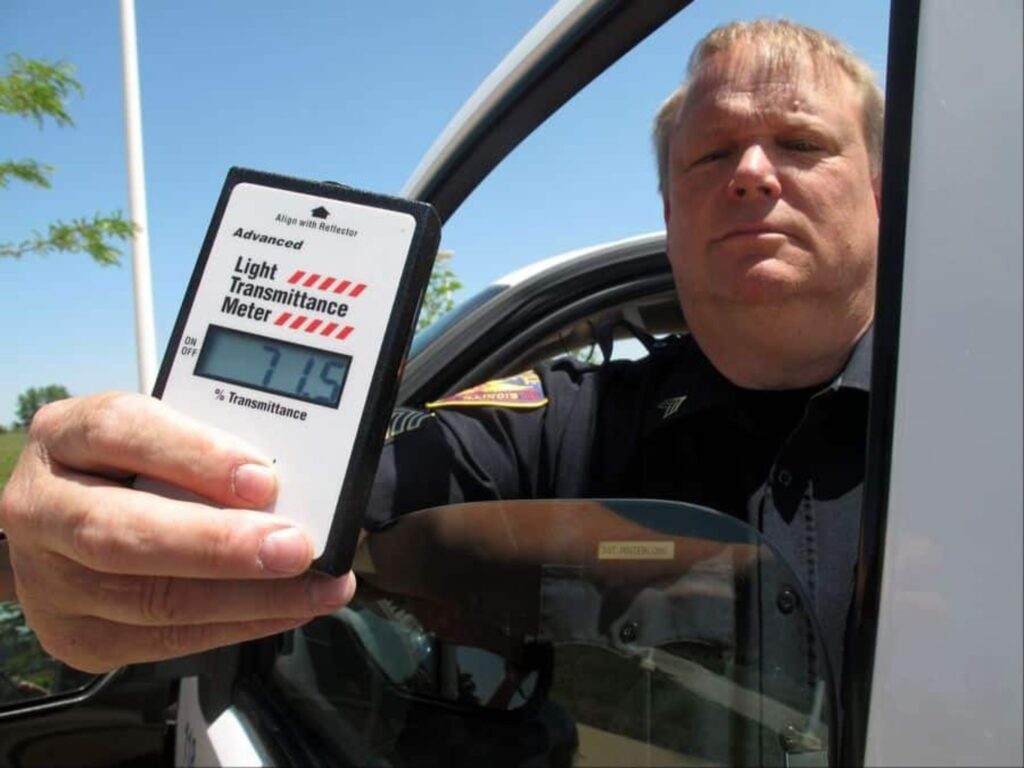Have a Questions? Call Today!
833-736-8698
Concerned about getting pulled over for car tint? Understanding the 2024 NC tint laws ensures you make the right choice. We cover everything about North Carolina window tint law, helping you stay compliant.
Keep reading for the latest details.

In North Carolina, a tint law governs the amount of light a driver’s window tint can block and reflect.
The primary focus of the North Carolina window tint law is Visible Light Transmission (VLT). VLT refers to the percentage of light that can pass through into the vehicle. It’s represented as a percentage, with lower percentages indicating darker tints and less light transmission.
Window tint laws are regularly updated based on safety standards for newer vehicles. However, North Carolina’s current window tint laws have remained unchanged since 2001, specifying the darkness and reflectiveness allowed for driver’s window tints.
These regulations apply to passenger vehicles, including cars, sedans, coupes, hatchbacks, and station wagons.
Front side windows: Up to 32% VLT tint darkness allowed.
Back side windows: Up to 32% VLT tint darkness allowed.
Rear windows: Up to 32% VLT tint darkness allowed.
Windshield: Tint cannot extend more than 5 inches below the top of the windshield or below the AS-1 line, whichever is longer.
Reflectivity: No more than 20% reflective.
Other Restrictions: Prohibited colors include red, amber, and yellow. Dual side mirrors are required for back tinted windows.
These regulations also apply to vehicles such as minivans, trucks, pickups, and SUVs designed to carry fewer than 10 passengers.
Front side windows: Up to 32% VLT tint darkness allowed.
Back side windows: Any tint darkness allowed.
Rear windows: Any tint darkness allowed.
Windshield: Tint cannot extend more than 5 inches below the top of the windshield or below the AS-1 line, whichever is longer.
Reflectivity: No more than 20% reflective.
Other Restrictions: Prohibited colors include red, amber, and yellow. Dual side mirrors are required for back tinted windows.
Tail Lights: Taillights cannot be covered with tints and must maintain their original red or clear color.
Headlights: Tinting headlights is illegal In North Carolina.
License Plate Cover: Tinted license plate covers are illegal In North Carolina.
North Carolina law enforcement takes window tint violations seriously. Being pulled over for illegal tint darkness can lead to a $50 fine, plus additional court costs totaling approximately $238, as reported by local DMV officials.
Individuals requiring darker window tints due to photosensitivity during daylight hours can seek a medical exception permit through the N.C. Division of Motor Vehicles’ Medical Review Program. Key points regarding these permits include:
– Validity: Permits are valid for 5 years.
– Limitations: An individual can hold a maximum of two medical permits simultaneously.
– Interchangeability: Permits are not interchangeable and must be kept in the vehicle to which they apply. It’s crucial for drivers to have their permit on hand at all times to avoid potential citations.
– Display: A medical exception sticker must be visibly displayed in the lower left‐hand corner of the rear window. Failure to display the sticker correctly may result in a $200 fine for noncompliance.
Contact us today to schedule your appointment and enjoy the convenience of our mobile service.
833-736-8698
You are currently outside of where we are performing repairs. Please enter your email address to be notified when we come to your area.
